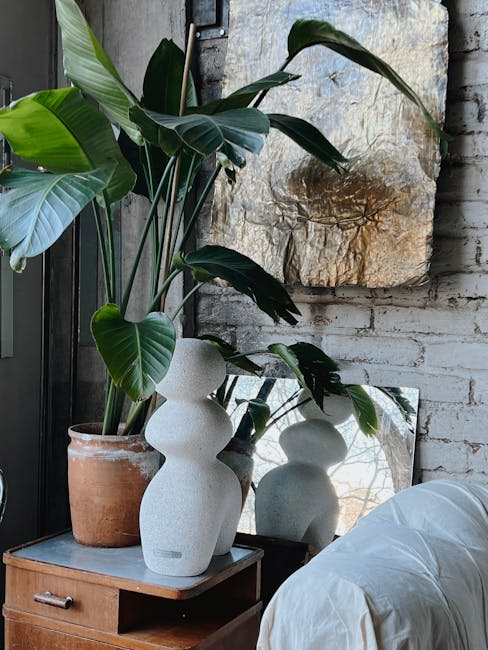How to Build a Bug Hotel for a Healthy Garden
Introduction
Want a thriving, healthy garden without relying solely on pesticides? The answer might be simpler (and more fun!) than you think: build a bug hotel! A bug hotel, also known as an insect hotel, provides shelter and nesting grounds for beneficial insects that naturally control pests, pollinate your plants, and contribute to a balanced garden ecosystem. This article will guide you through building your own bug hotel, ensuring a haven for helpful critters and a healthier garden for you.
Building Your Bug Hotel: A Step-by-Step Guide
Choosing the Right Location
The location of your bug hotel is crucial for attracting the right inhabitants. Consider these factors:
- Sunlight: Offer a mix of sun and shade. Some insects prefer warmth, while others need cooler spots.
- Shelter from the Elements: Position your hotel in a relatively sheltered spot, protected from strong winds and heavy rain. A partially shaded area under a tree or against a fence works well.
- Proximity to Food Sources: Place your bug hotel near your garden, flower beds, or even a wildflower patch. This gives insects easy access to food sources like nectar and pollen.
- Stability: Ensure your bug hotel is stable and won’t topple over, especially in windy conditions.
Selecting Your Materials
The beauty of a bug hotel is that you can build it using mostly recycled and natural materials. Here are some ideas:
- Frame: Pallets, old drawers, wooden boxes, or even sturdy cardboard boxes can serve as the frame for your hotel.
- Fillings: This is where you get creative! Different materials attract different insects. Consider these options:
- Hollow Stems (bamboo, reeds): Attract solitary bees, essential pollinators.
- Pinecones: Provide shelter for ladybugs, which prey on aphids.
- Dry Leaves: Offer overwintering habitat for lacewings and other beneficial insects.
- Straw or Hay: Provides insulation and nesting material.
- Twigs and Small Branches: Create hiding places for beetles and other ground-dwelling insects.
- Drilled Wood Blocks: Perfect for solitary bees to lay their eggs.
- Bricks or Tiles: Create cool, damp areas for ground beetles and amphibians.
- Clay Pots: Can be filled with materials or left empty as small shelters.
- Tools: You’ll need basic tools like a saw (if cutting wood), drill (for making holes in wood blocks), gloves, and possibly some wire or string to secure materials.
Constructing Your Bug Hotel
- Build the Frame: If using a pallet, you already have a pre-made structure. If using boxes or drawers, stack and secure them together to create the desired size and shape.
- Create Compartments: Divide the frame into different compartments using cardboard, wood, or even chicken wire. This allows you to fill each section with different materials.
- Fill the Compartments: Arrange your chosen materials in the compartments, packing them tightly enough to provide stability but not so tightly that insects can’t access them.
- Add a Roof (Optional): A roof made from wood, tiles, or even tarp will help protect your bug hotel from the elements. Ensure it overhangs slightly to prevent water from entering.
- Secure Everything: Double-check that all materials are securely in place and won’t fall out, especially in windy conditions.
Attracting Residents
Now that your bug hotel is built, how do you attract residents? Here are a few tips:
- Plant Native Flowers: Native plants provide the best food sources for local insects.
- Avoid Pesticides: Pesticides kill beneficial insects as well as pests.
- Provide a Water Source: A shallow dish of water with pebbles for insects to land on can be a lifesaver, especially during dry periods.
- Patience: It may take some time for insects to discover and move into your bug hotel. Be patient and let nature take its course!
Benefits of a Bug Hotel
A bug hotel provides numerous benefits to your garden and the environment:
- Natural Pest Control: Attracts predators like ladybugs, lacewings, and ground beetles that prey on aphids, slugs, and other garden pests.
- Pollination: Provides nesting sites for solitary bees, which are excellent pollinators.
- Improved Soil Health: Some insects, like ground beetles, contribute to decomposition and improve soil structure.
- Biodiversity: Supports a diverse range of insect life, contributing to a healthy ecosystem.
- Educational Opportunity: Provides a fascinating way to learn about insects and their role in the environment.
Conclusion
Building a bug hotel is a rewarding and environmentally friendly project that can significantly improve the health and vitality of your garden. By providing shelter and nesting grounds for beneficial insects, you’ll create a balanced ecosystem, reduce your reliance on pesticides, and enjoy a thriving garden for years to come. So gather your materials, get creative, and build your own bug hotel today! You’ll be amazed at the positive impact it has on your garden and the environment.




Post Comment